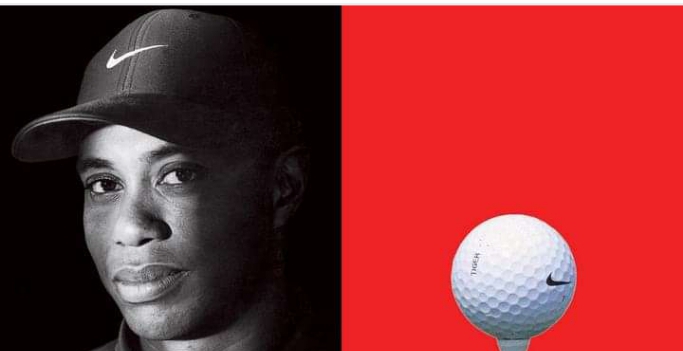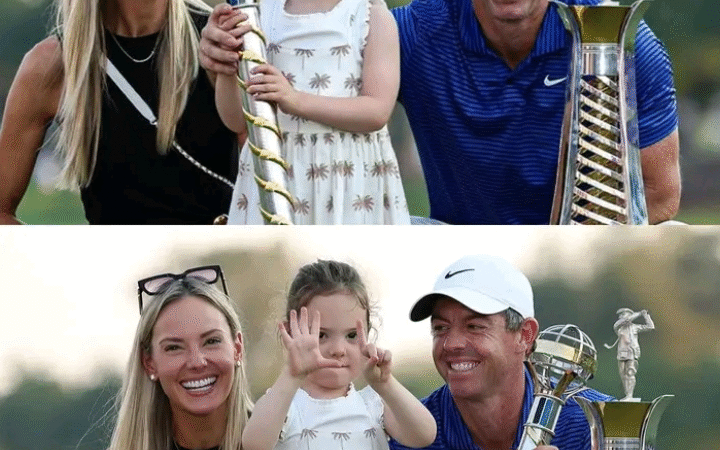Tiger Woods and the golf ball that (almost) changed it all

In 2000, Tiger Woods released a new Nike golf ball and won the US Open by 15 strokes. Here’s the full story behind the ball: Kel Devlin was eating dinner at his home in Portland, Ore., when the phone rang that Sunday. It was a forest of tigers. “If we had the ball this week, we would have won by five points,” Devlin Woods recalled. 31 days later, Woods had the ball and used it to break records and destroy the status quo. Before this conversation in May 2000, Devlin had never heard Woods talk about the prototype ball. Devlin, then global director of sports marketing for Nike Golf, worked with Woods for nine months to develop the Nike Tour Accuracy program. The ball was unlike anything Woods had played before, including the professional title shot he would shoot that day with a final-round 63. Despite his impressive record, Woods finished the Byron Nelson Classic one stroke behind winner Jesper Parnevik. The US Open was held at Pebble Beach a month later, but “my ball” was still an untested prototype.
“Can we meet in Germany on Tuesday morning?” Woods said on the phone. Tiger Woods uses a new Nike golf ball at the Deutsche Bank SAP Open in May 2000.
Woods’ professional title at the Byron Nelson in 2000 was a PGA Tour event at the time. The fluid-filled core and shaft design is very similar to the brand’s Tour Balata model, but the elastomeric coating reduces the excessive wear that the Balata-coated version experiences at the world’s highest impact speeds. Players only used these balls for three holes, dropping three new balls for every nine holes, and then throwing them away because they were scratched. Titleist Professional is the best of both worlds.
Like the athlete that inspired its development, the Nike Tour Accuracy prototype was a tiger of different stripes: a three-piece ball with a rugged construction, a synthetic molded rubber core, and a multi-layered urethane cap. The goal of the prototype phase was to create a ball that was faster and had much less spin than a rolled ball, while still providing the feel and performance that tournament players are familiar with.
tour
Used by Tiger Woods during his five Masters victories
During the test, Woods reviewed several versions of the Tour’s accuracy and carefully explained the shortcomings of Bridgestone golf engineers Devlin and Hideyuki “The Rock” Ishii, who brought the ball to life. (Woods confirmed earlier this year that Bridgestone has been making Nike balls for nearly 18 years.)
Devlin and Ishii spent countless days and hours traveling with the prototype in a suitcase, going wherever Woods had time to test the latest version of the ball. Sometimes even on vacation.
“I tried it and it was great,” Devlin said. “He was so good at the game that he started playing. I tested the driver and he said: “He hit me in the face a bit. Probably around 2,600 rpm”. If you look at the launch monitor, it’s 2570.
Of course, Woods felt the feedback the ball was giving him was otherworldly. At one point, he thought he noticed a discrepancy between the “click” sound made by the prototype when it made contact with his putter and the sound of a Titleist ball under the same conditions. Frequency analysis using a fast Fourier transform acoustic analyzer confirmed Woods’ suspicions. There was a peak sound around 4,000 Hz that the Tour Accuracy prototype at the time couldn’t reproduce, so the ball sleeve had to be slightly adjusted to fit Woods’ carefully tuned ears.
During a session at Big Canyon Country Club in Newport Beach, California in early 2000, Woods narrowed the prototype field down to two options. He liked the strong flight of the ball, the extra 10 mph and the way it flew through the wind, but he didn’t want to feel rushed. He said Devlin’s testing will be put on hold until October. When the Nike Tour Accuracy was still a prototype, Woods thought his putting was quiet. Accuracy proven through algorithmic sound analysis. “He liked the ball, but at that point I was waiting,” Devlin said. “There was absolutely no indication that he would use it during the 2000 season.”
Devlin, the son of tour player Bruce Devlin during the Big Three’s heyday in the 1960s, was defenseless when Woods asked him to try out for the Deutsche Bank-SAP Open that spring. We start again from Hamburg. . The last shot Woods wanted to play was at a Bridgestone facility in Japan, where he was Monday morning.
Devlin quickly called Ishii in Japan to see if he could get on the plane with the ball that afternoon. Ishii thought Devlin was pulling his chains.
“It really breaks my heart,” Devlin said. “Meet Tiger at the first tee on Tuesday morning.”
Devlin packed his bags and headed to the Portland airport. At the appointed time on Tuesday morning, he and Ishii walked to the first tee, where they received a warm welcome from Woods’ former German caddy, Steve Williams. “What are you two idiots doing here?” Devlin remembered what Williams said.
When Devlin told Williams his goal, he responded with one word: “Bulls-t.”
As soon as Woods arrived, the rain and wind hit his face and he immediately got on the Titleist Pro. Devlin saw the wind blowing from left to right catching the ball and pushing it into the push. Woods pushed the Nike Tour Accuracy and broke it on the starting line. It traveled a short distance (about 5 meters) before landing in the center of the canal. This was a key moment for Devlin as he showed his ability to handle the ball in game situations. Woods, who returned to the United States for the Memorial Tour, confirmed in a press conference earlier this week that the ball was still in the testing phase but was comfortable enough to play. “The only way [to know if it’s right] is to test it in competition,” he said. By the end of the week, Woods had hit five shots through the fairway mirror at Muirfield Village, the 19th victory of his young PGA Tour career. After two starts with the Nike Tour Accuracy, Woods was sold with just one caveat. According to an official directly involved with the ball, Woods’ hesitation was related to his ability to judge distance and control the flight of the ball in windy conditions.
tour
The winner’s bag: Tiger Woods’ outfit at the 2019 Masters
“He’s always had more time on the ball,” said a source who spoke on condition of anonymity. “Seven yards for long and mid irons and three yards for wedges. The ball was much stronger against the wind, but Tiger was used to sustained flight and distance.
Two weeks later, at the U.S. Open at Pebble, Woods put his worries aside and shot a 65. The next day, Woods shot darts all day, the course swaying in the strong wind off the Pacific Ocean. He finished the week with a 6-over par lead after 36 holes and 15 shots off the course. He set or tied nine US Open records and won the first of four consecutive major championships. And he did it all with a new wind and water resistant ball. “I won four straight majors with this ball and the rest is history because my ball skills disappeared. “Everything has changed.”
The only problem Woods had with the ball that week was one he didn’t know about at the time. On Saturday morning, after Tiger washed off the tee on the stunning 18th hole of the fog-delayed second round, Williams appeared to be the last bit of Tour accuracy left in the bag. Woods forgot to change balls while practicing in his hotel room last night, and when he returned to the green, he had only two balls left. It wasn’t until the end of the round that he realized what was happening. This was the closest Woods came all week to breaking the most dominant record in golf history. At the 2000 Masters, a month before Woods officially introduced the Nike Tour Accuracy system to German tournaments, 59 out of 95 players hit the ball. The following year, Woods won nine tournaments. When he completed the Tiger Slam at Augusta National in 2001, all but four players in the field hit heavy balls.
The development of the Nike Tour Accuracy program and the impact Woods had on other players and the history of golf was not lost on Woods. A few years later, in 2014, he said, “The biggest transition I ever made was in 2000. He won four major games with that ball, and the rest is history. This is because the ball skill is gone. Everything has changed. I was excited to be part of this wave of innovation.”
Especially in the equipment industry, being first does not always guarantee success. If so, Top-Flite’s Strata Tour will be led by Mark O’Meara. O’Meara took over the core of the Top-Flite three years before Woods made the jump, and in the 1998 season, at the age of 41, he won seven times around the world, including the Masters and the British Open. O’Meara lacked the characteristics and marketability of Woods to warrant a demotion.





